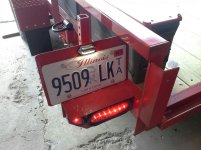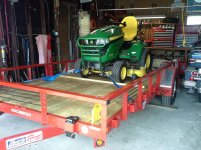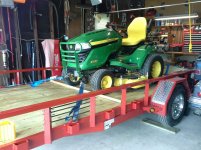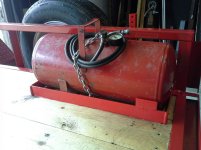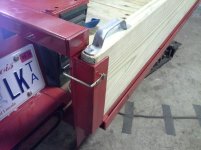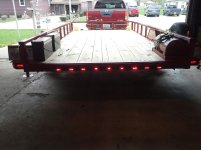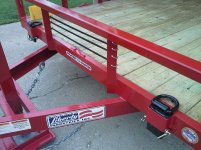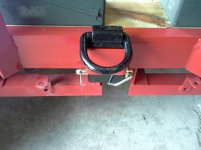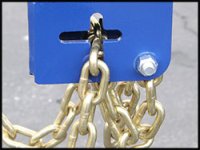5.3 What are the general requirements for towing and trailers? When towing, you must:
A. Comply with applicable Federal and State Department of Transportation (DOT) regulations (e.g., 49 CFR and Federal Motor Carrier Safety Administration (FMCSA) regulations).
B. Ensure that the towing devices you use on any combination of vehicles are structurally adequate and rated by the manufacturer for the weight drawn and are properly mounted. Towing devices include receivers, hitches, hitch balls, trailer couplers, and tongues.
C. Not exceed the towing capacity of any tow vehicle.
D. Not exceed the Gross Combined Weight Rating (GCWR) of a medium or heavy-duty truck when in combination with a trailer. The manufacturer specifies this value as the maximum loaded weight of a combination vehicle.
E. Couple every trailer, except fifth-wheel trailers, to the towing vehicle with safety chains or cables that meet Society of Automotive Engineers International standard J684. This prevents the vehicle and trailer from separating in case of trailer/hitch disconnect.
(1) Cross safety chains or cables in an “X” pattern below the ball mount with enough slack so that they do not restrict turning, drag the ground, or allow the coupler to hit the ground.
(2) Use properly rated safety chains with clevis hooks that have a functioning safety latch to prevent the hook from disconnecting from the tow vehicle except for a trailer manufacturer that provides “S” style chain hooks as Original Equipment Manufacturer (OEM) equipment.
(3) Do not twist the safety chains to shorten their length.
F. Load trailers so that the weight is distributed evenly on all wheels. When properly balanced, approximately 10-15 percent of the total weight should rest on the trailer hitch. For multiple stacked items loaded onto a trailer, the heaviest items should be on the bottom to maintain a low center of gravity and aid in stability.
G. Use electric hookups to activate the tail lights, brake lights, license plate illuminator light, and turn signals. Trailers that are 6½ feet wide or wider at any point, including the load, must have front and rear side marker lights.
H. Ensure that any trailer with a GVWR of 2,000 pounds or more has brakes and breakaway components or switches that are maintained in good working order. State regulations and local guidelines that impose more restrictive requirements than this chapter take precedence.
